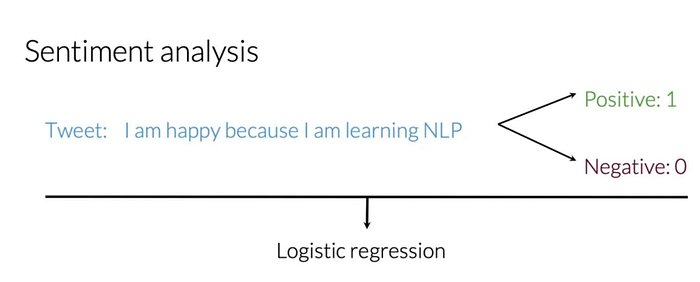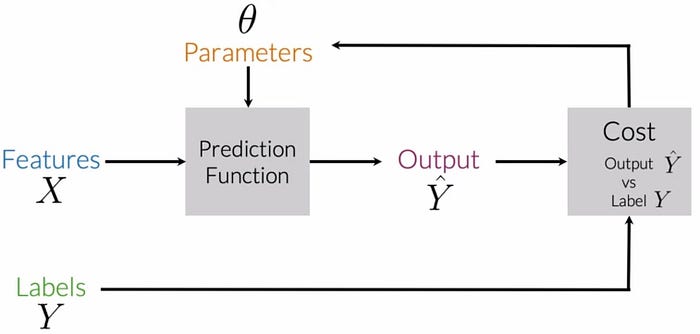Natural Language Processing (Part 3)
Sentiment Analysis using Logistic Regression with Python
Sections
Introduction
What is Sentiment Analysis?
How does sentiment analysis work
Supervised Machine Learning
Logistic Regression and Sentiment Analysis
Preparing the Data
Feature Extraction
Building the Logistic Regression Model
Evaluating the Model
Improving the Model
Real-World Applications
Challenges and Limitations
Conclusion
Introduction
Sentiment analysis, also known as opinion mining, is a technique used to determine the sentiment or emotion expressed in a piece of text. It has gained significant popularity in recent years due to the rise of social media and the need to understand customer opinions and feedback. In this blog post, we will explore how to perform sentiment analysis using logistic regression with Python.
Section 1: What is Sentiment Analysis?
Sentiment analysis is a natural language processing (NLP) technique that aims to understand and categorize the sentiment expressed in a given text. It involves analyzing the words, phrases, and context of the text to determine whether the sentiment is positive, negative, or neutral.
Sentiment analysis, also known as opinion mining, is a technique used to determine the sentiment or emotion expressed in a piece of text. It has gained significant popularity in recent years due to its applications in various fields such as marketing, customer feedback analysis, and social media monitoring. In this blog post, we will explore the concept of sentiment analysis and delve into the details of using logistic regression as a powerful tool for sentiment classification.
In this section, we will provide an overview of sentiment analysis and its importance in today’s data-driven world.
Sentiment analysis is the process of extracting subjective information from text and determining the sentiment or emotion associated with it. It involves analyzing the text to classify it into positive, negative, or neutral sentiment categories. The main goal of sentiment analysis is to understand the opinions, attitudes, and emotions expressed by individuals or groups. This information can then be used to make informed decisions, improve customer service, and gain valuable insights.
Def: Sentiment analysis has been widely used since the early 20th century, and its research area is still fast growing. One of the most advanced solutions is to use AI to proceed with sentiment analysis. The algorithm uses a natural language processing (NLP) technique which enables it to determine the moods or emotions of a piece of text. In this case, companies can react based on user feedback.
Def: Sentiment analysis is a Natural Language Processing (NLP) [2] technique used to determine the sentiment of a text by automatically identifying its underlying opinions. The sentiment can be positive (e.g. “I’m very happy today”), negative (e.g. “I didn’t like that movie”), or neutral (e.g. “Today is Friday”, which may be subjectively seen as positive by some people actually 😁) [1]
Section 2: How does sentiment analysis work
Sentiment analysis typically works by first identifying the sentiment of individual words or phrases. This can be done using a variety of methods, such as lexicon-based analysis, machine learning, or natural language processing.
Once the sentiment of individual words or phrases has been identified, they can be combined to determine the overall feeling of a piece of text. This can be done using a variety of techniques, such as sentiment scoring or sentiment classification [4].
Background: machine-learning classification task of sentiment analysis. In this example you have the tweet, let’s say, I’m happy because I’m learning NLP. And the objective in this task is to predict whether a tweet has a positive or negative sentiment. And you’ll do this by starting with a training set where tweets with a positive sentiment have a label of one, and the tweets with a negative sentiment have a label of zero. In order for you to implement logistic regression, you need to take a few steps. In this tutorial you will learn about the steps required in order to implement this algorithm, so let’s take a look.
In order for you to implement logistic regression, you need to take a few steps. In this tutorial you will learn about the steps required in order to implement this algorithm, so let’s take a look.
Section 3 : Supervised Machine Learning
 In supervised machine learning, you have input features X and a set of labels Y. Now to make sure you’re getting the most accurate predictions based on your data, your goal is to minimize your error rates or cost as much as possible. And to do this, you’re going to run your prediction function which takes in parameters data to map your features to output labels Y hat.
In supervised machine learning, you have input features X and a set of labels Y. Now to make sure you’re getting the most accurate predictions based on your data, your goal is to minimize your error rates or cost as much as possible. And to do this, you’re going to run your prediction function which takes in parameters data to map your features to output labels Y hat.
Now the best mapping from features to labels is achieved when the difference between the expected values Y and the predicted values Y hat is minimized. Which the cost function does by comparing how closely your output Y hat is to your label Y. Then you can update your parameters and repeat the whole process until your cost is minimized. So let’s take a look at the supervised
Section 4- Logistic Regression and Sentiment Analysis
Logistic regression is a statistical model used to predict binary outcomes. It is commonly used when the dependent variable is dichotomous, meaning it can take only two values. In the context of sentiment analysis, the binary outcome represents the sentiment category (positive or negative).
Logistic regression is a popular machine learning algorithm used for binary classification problems. It is well-suited for sentiment analysis because it can handle text data and provide probabilistic outputs. Logistic regression models are interpretable and can capture nonlinear relationships between features and labels.
Logistic regression works by estimating the probability of an event occurring based on a set of independent variables. It uses a logistic function (also known as a sigmoid function) to map the linear combination of the independent variables to a value between 0 and 1. This value represents the probability of the event occurring.
For this task you will be using your logistic regression classifier which assigns its observations to two distinct classes. Next up I’ll show you how to do this. So to get started building a logistic regression classifier that’s capable of predicting sentiments of an arbitrary tweet. You will first process the raw tweets in your training sets and extract useful features. Then you will train your logistic regression classifier while minimizing the cost. And finally you’ll be able to make your predictions. So in this video you learned about the steps required for you to classify a tweet. Given the tweet, you should classify it to either be positive or negative. In order for you to do so, you first have to extract the features. Then you have to train your model. And then you have to classify the tweet based off your trained model. In the next video, you’re going to learn how to extract these features. So let’s take a look at how you can do that
You will first process the raw tweets in your training sets and extract useful features. Then you will train your logistic regression classifier while minimizing the cost. And finally you’ll be able to make your predictions. So in this video you learned about the steps required for you to classify a tweet. Given the tweet, you should classify it to either be positive or negative. In order for you to do so, you first have to extract the features. Then you have to train your model. And then you have to classify the tweet based off your trained model. In the next video, you’re going to learn how to extract these features. So let’s take a look at how you can do that
Section 5: Preparing the Data
Before we can build a sentiment analysis model, we need to prepare the data. This involves cleaning and preprocessing the text, as well as labeling the data with sentiment labels (positive, negative, or neutral).
Section 6: Feature Extraction
Feature extraction is a crucial step in sentiment analysis. It involves converting the text into numerical features that can be used by a machine learning model. Some common feature extraction techniques for sentiment analysis include bag-of-words, TF-IDF, and word embeddings.
Section 7: Building the Logistic Regression Model
Once we have extracted the features, we can build our logistic regression model. We will use the scikit-learn library in Python to implement logistic regression. This involves splitting the data into training and testing sets, fitting the model on the training data, and evaluating its performance on the testing data.
Section 8: Evaluating the Model
To evaluate the performance of our sentiment analysis model, we can use various metrics such as accuracy, precision, recall, and F1 score. These metrics provide insights into how well our model is performing in classifying sentiment.
Section 9: Improving the Model
There are several ways to improve the performance of our sentiment analysis model. One approach is to experiment with different feature extraction techniques and see which one works best for our dataset. We can also try using more advanced machine learning algorithms or ensemble methods to improve accuracy.
Section 10: Real-World Applications
Sentiment analysis has a wide range of real-world applications. It can be used in social media monitoring to analyze customer opinions and feedback. Companies can use sentiment analysis to understand customer satisfaction and make informed business decisions. Sentiment analysis can also be applied in product reviews, brand monitoring, and market research.
Section 11: Challenges and Limitations
While sentiment analysis has proven to be effective in many cases, it does have its limitations. One major challenge is dealing with sarcasm and irony in text, as these can often lead to misinterpretation of sentiment. Sentiment analysis models may also struggle with domain-specific language or slang. Additionally, sentiment analysis is subjective and can vary based on cultural differences and individual interpretations.
Section 12: Conclusion
In conclusion, sentiment analysis using logistic regression is a powerful technique for understanding the sentiment expressed in text data. By preprocessing the data, extracting relevant features, and building a logistic regression model, we can accurately classify sentiment as positive, negative, or neutral. Sentiment analysis has numerous applications in various industries and can provide valuable insights for decision-making processes. However, it is important to be aware of its limitations and challenges in order to obtain reliable results.
Please Follow coursesteach to see latest updates on this story
If you want to learn more about these topics: Python, Machine Learning Data Science, Statistic For Machine learning, Linear Algebra for Machine learning Computer Vision and Research
Then Login and Enroll in Coursesteach to get fantastic content in the data field.
Remember, learning is a continuous process. So keep learning and keep creating and Sharing with others!💻✌️
Note:if you are a NLP export and have some good suggestions to improve this blog to share, you write comments and contribute.
if you need more update about NLP and want to contribute then following and enroll in following
👉Course: Natural Language Processing (NLP)
👉📚GitHub Repository
👉 📝Notebook
References
- 1 Two minutes NLP — Quick Intro to Sentiment Analysis
- 2- Understanding the Emotion Tone of Text with AI — Sentiment Analysis on Monkeypox Tweets
- 3-Supervised Machine Learning &Sentiment Analysis
- 4–2023 sentiment analysis: Marketing with large language models (LLMs)






































